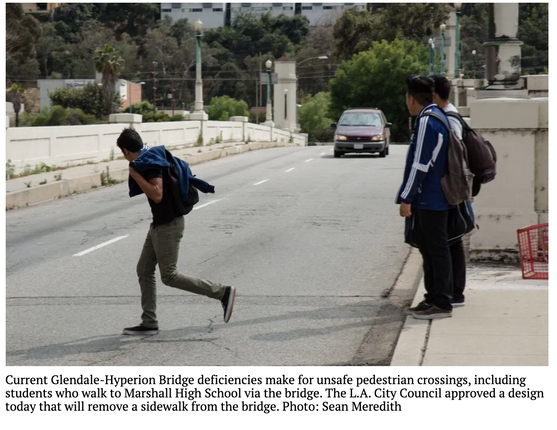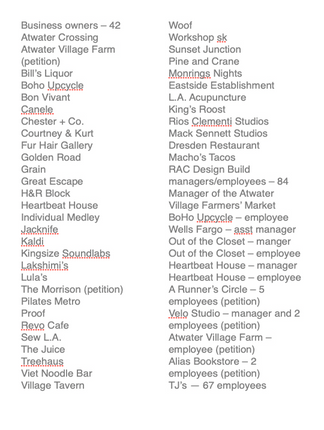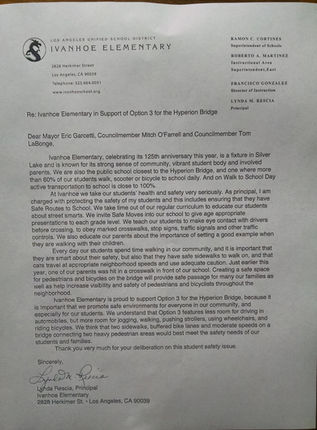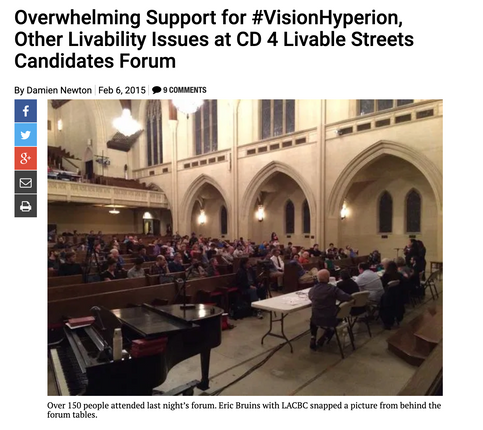A BRIDGE TO NOWHERE: Sometimes Bad Ideas Win
Walking over the Hyperion Bridge from Los Feliz to Atwater dumps you out in the middle of 6 lanes of traffic. The experience is harrowing from start to finish.
Needing to get twins to their 3 month check up without access to a car, drove home exactly how wrong the design of this bridge was.
The good news - there were plans to redesign the bridge because it needs to be retrofit to protect it from earthquakes anyway.
But the good news ends there. A failed political process led city officials to design a bridge for even faster car travel (50-60mph connecting two "pedestrian zones" filled with eateries, grocery stores, and other destinations). This design came complete with highway barriers, no bike lanes, and no continuous sidewalks.
Uproar shut these plans down, but another failed political process still leaves the approved bridge design with only one sidewalk, and sub-standard bike lanes. Misapplying outdated ideas of "level of service" - not simply to reduce waits for drivers at traffic lights, but to reward traveling at speeds higher than the speed limit - city officials approved a bridge design that promotes a car-centric future. This new design, once built, will likely last for at least the next 50 years.
Years of protest, hundreds of letters from stakeholders, businesses, schools, student and parent groups, along with meetings with city officials, a citizen advisory committee that recommended against this short-sited plan, photos and videos documenting people using the bridge on foot and bike, and countless news articles yielded a design that still falls far short of being human-centric and providing adequate safety and comfort for those who walk or bike across the bridge.
What can we learn from a failed attempt? How could we have influenced decision makers?
and performance as media.


















